La laguna di Venezia - Parte 2
5 settembre 2024
- ENGLISH VERSION BELOW -
Dopo Chioggia cominciamo ad addentrarci nella Laguna con i suoi canali e le tante isole, ognuna con la propria storia. Il traffico di barche a motore, piccoli o grandi, e vaporetti ricorda il traffico di una cittadina con motorini, macchine e autobus! Un'altra caratteristica della navigazione in laguna è l'importanza di tenere sempre sott'occhio la profondità. Liith, con il suo peschaggio di 1,95 m, infatti, non è proprio l'imbarcazione ideale per la acque lagunari e l'allarme degli strumenti di bordo che suona ogni volta che si raggiungono i 3 m di profondità non ce l'ha certo mai fatto dimenticare!
Risaliamo verso nord lungo il canale di Pellestrina che costeggia l'omonima isola lunga 11 km e larga da un massimo di 1,2 km a soli 23 m! Questo la rende il litorale più stretto tra quelli che dividono la laguna dal mare Adriatico. Sulla nostra destra sfilano, in una affascinante processione, chiese, coloratissime casette e porticcioli che formano i vari centri abitati di questo che fu tra i primi insediamenti delle popolazioni venete in fuga dalle invasioni barbariche. Sicuramente uno dei canali più belli che abbiamo percorso!
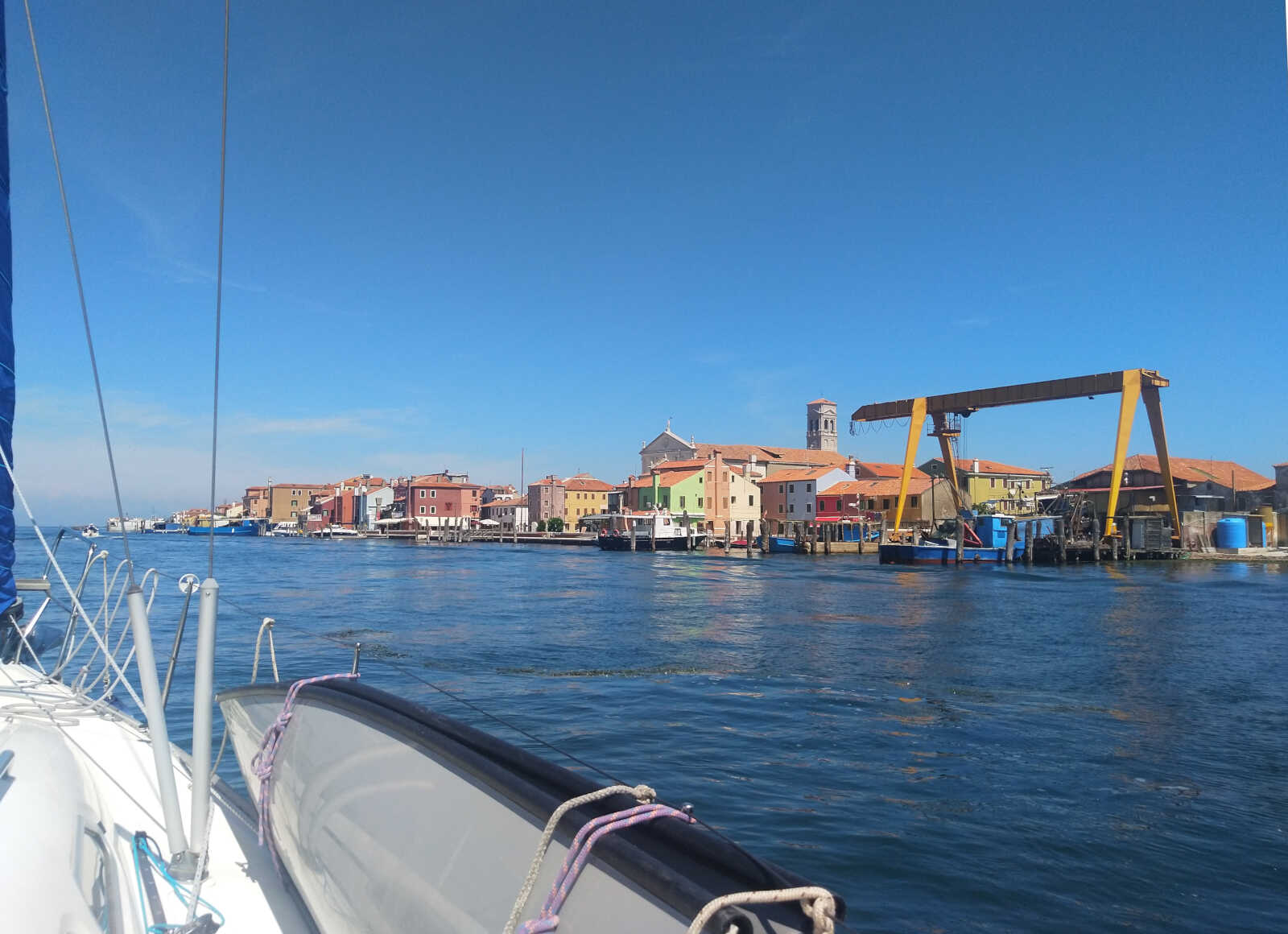
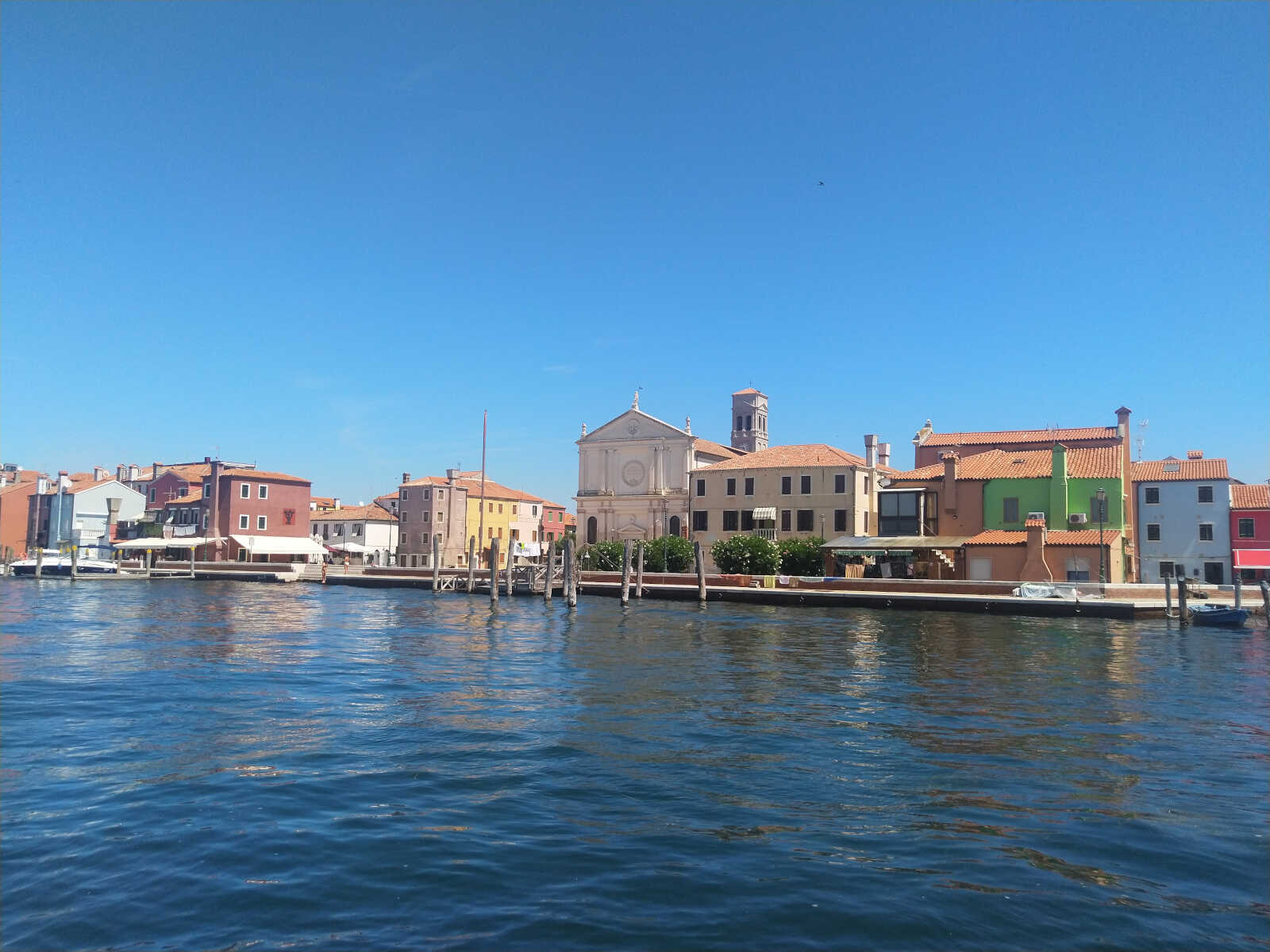
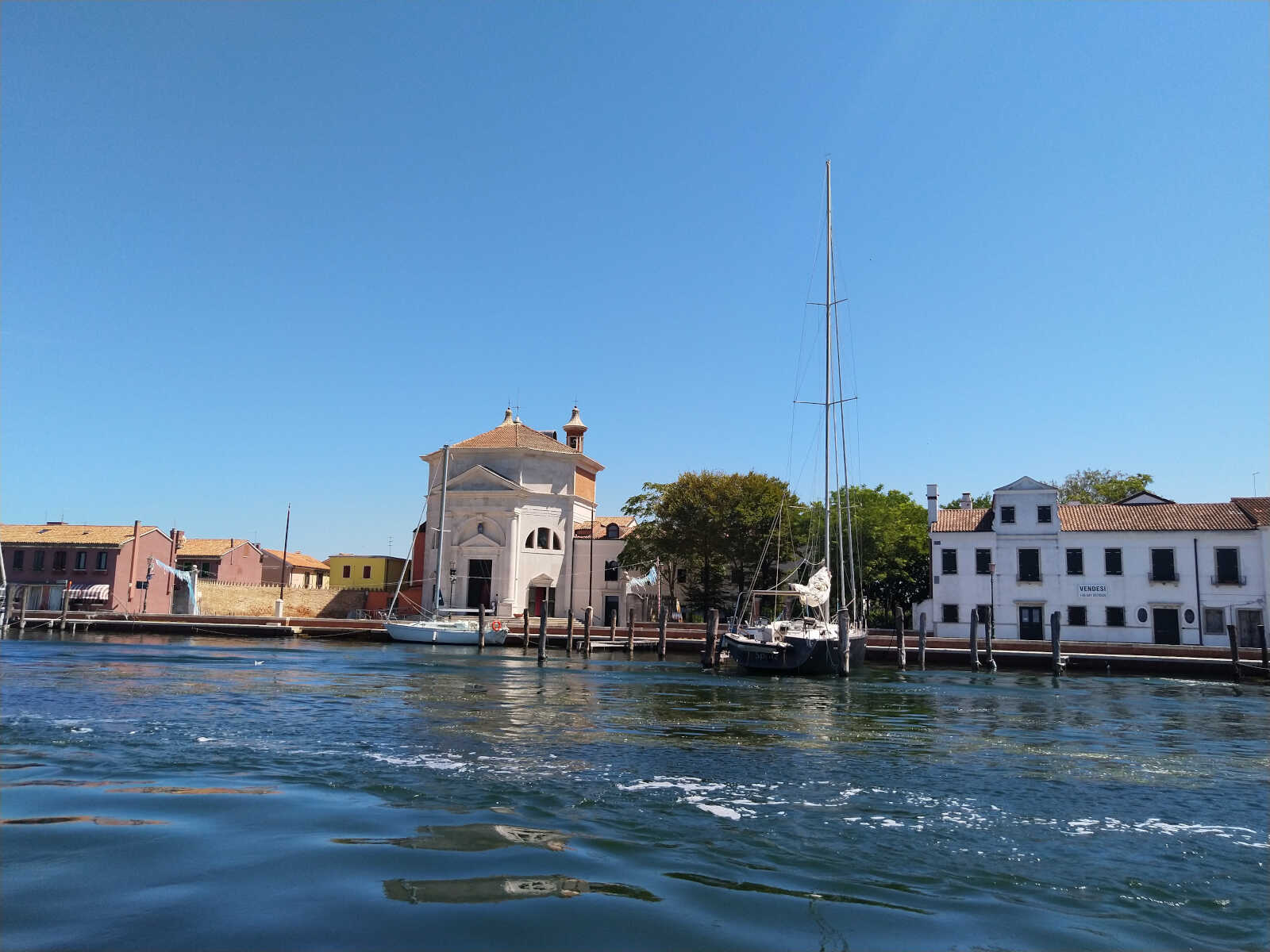
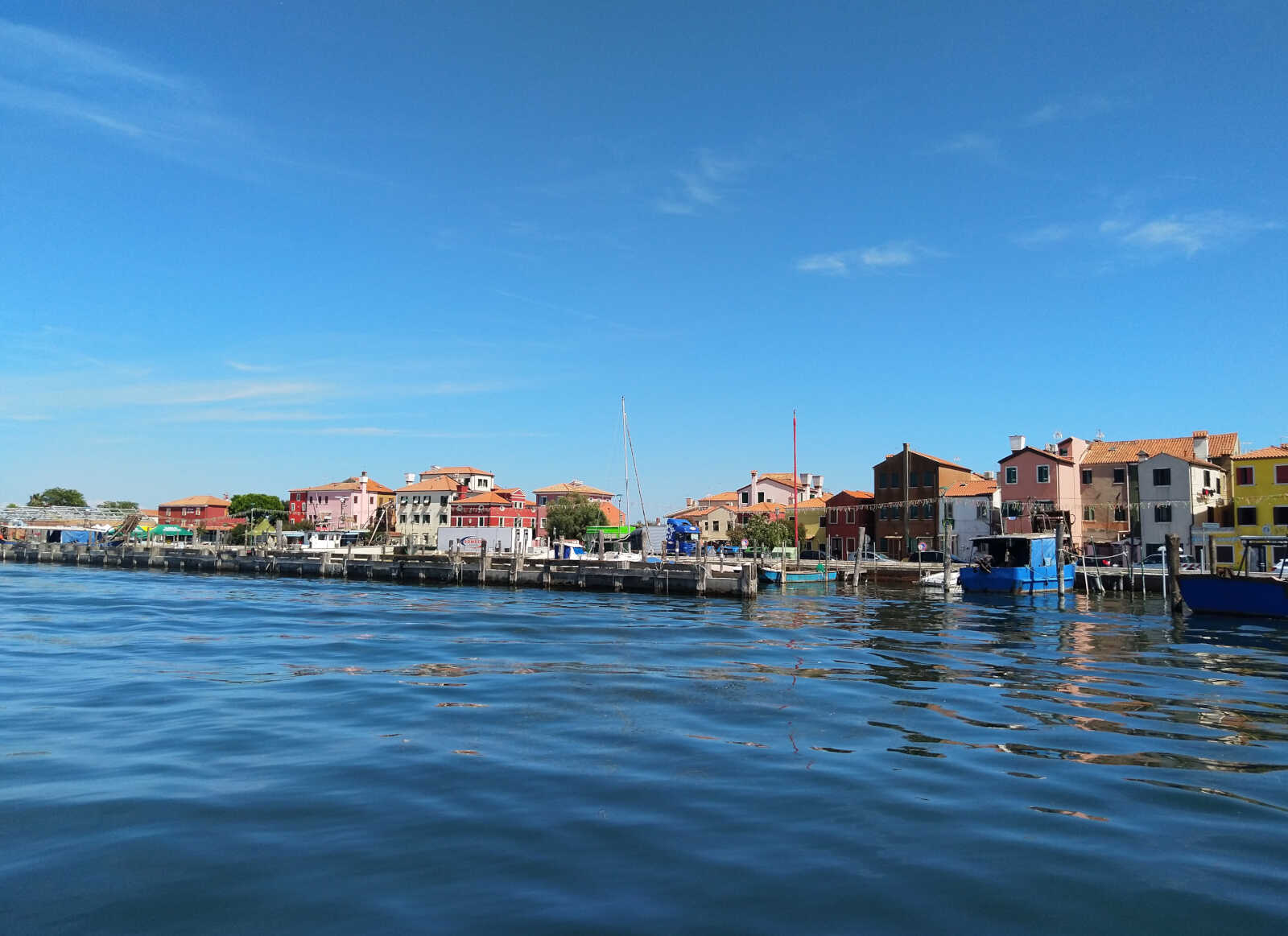
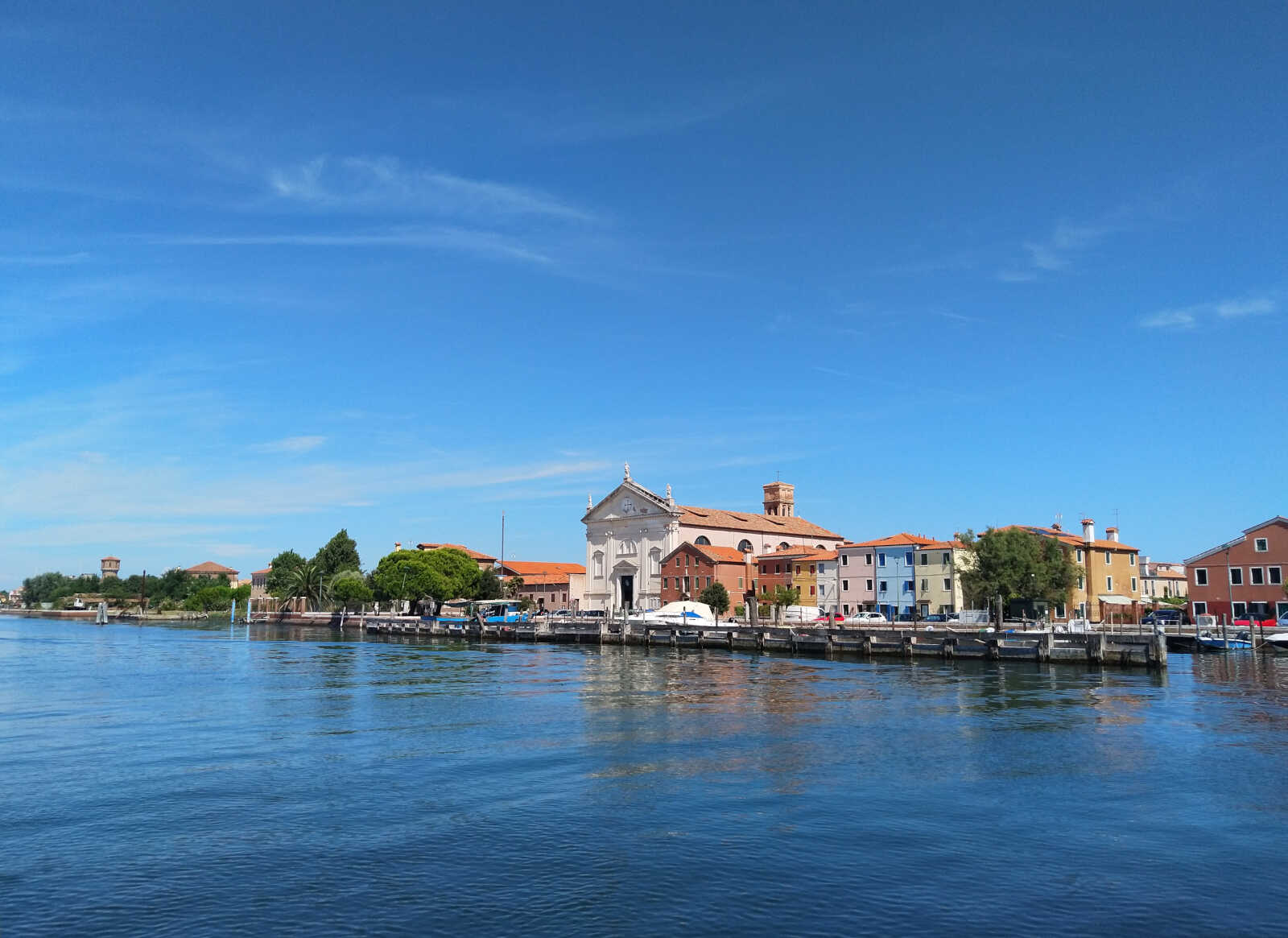
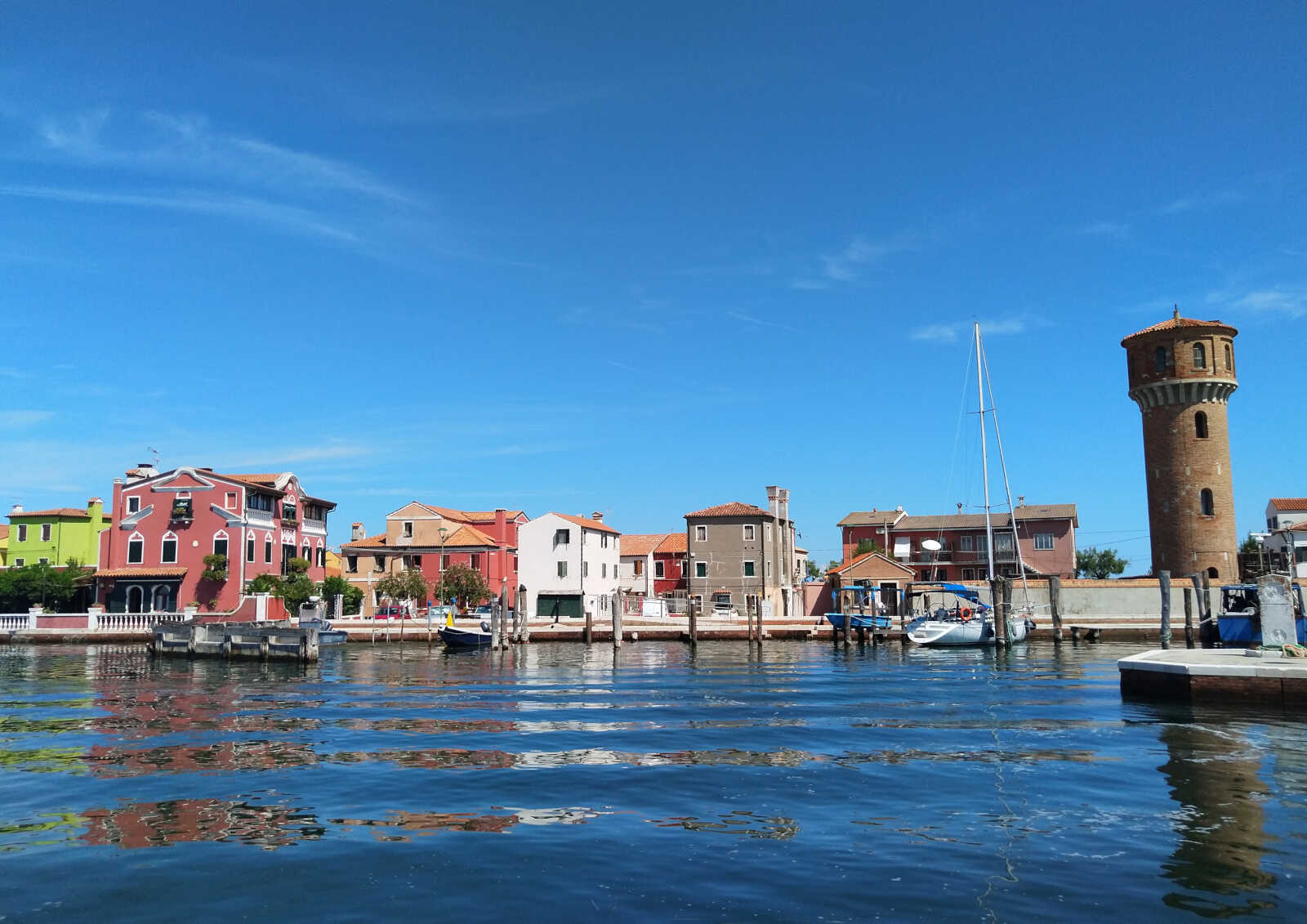
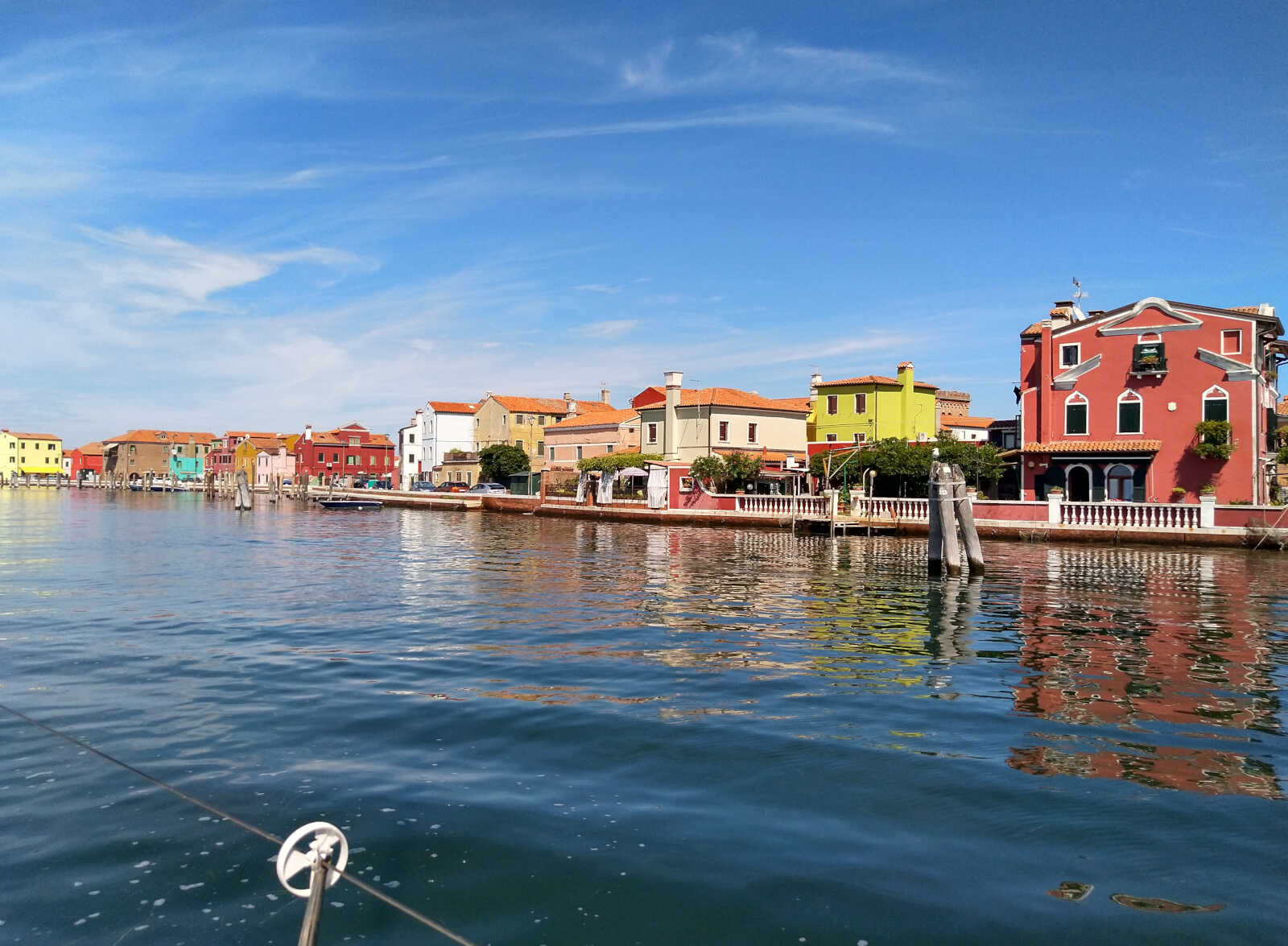
Mezz'ora dopo essere partiti cominciamo a sentire il motore brontolare, avendo passato grosse chiazze di alghe, pensiamo che magari se ne siano incastrate nell'elica, ma il motore sembra perdere sempre più colpi, quindi si fa largo l'ipotesi che forse abbiamo finito il gasolio e che la spia del serbatoio, che segna ancora un quarto di pieno, non funzioni correttamente. Non sappiamo ancora la causa, ma bisogna trovare una soluzione visto che rischiamo di trovarci alla deriva nel trafficato canale. Cominciamo a chiedere alla barche di passaggio per un traino e fortunatamente dopo pochi tentativi troviamo i nostri salvatori, passiamo loro le cime di ormeggio da prua per essere trainati e una volta davanti al benzinaio ( che fortunatamente non era molto lontano), riusciamo a fare una perfetta manovra di ormeggio sfruttando solo l'abbrivio (cioè quello che rimaneva del movimento impresso dal traino). Possiamo già tirare un sospiro di sollievo: almeno non siamo alla deriva in balia della corrente.
Fatto il pieno, dopo un paio di tentativi, il motore parte senza rumori strani e proseguiamo lungo il Canale di Pellestrina e man mano che passa il tempo si rafforza la nostra convinzione che semplicemente avevamo finito il carburante e il motore di Lilith non ha nessun guasto: pian piano torniamo ad assaporare la stupenda vista dei borghi di San Vito, San Antonio, Porto Secco ed infine san Pietro in Volta prima di attraversare la bocca di Malamocco che separa Pellestrina dal Lido.
Costeggiamo quindi l'isola del Lido fino al nostro primo ancoraggio della crociera, a sud-ovest dell'isola di Poveglia.
Ancora una volta si tratta di un lembo di terra ricco di storia anche se a vederla oggi non si direbbe: l'isola di Poveglia è infatti coperta da folta vegetazione e l'unica costruzione presente sono le rovine di quello che in origine fu un centro di quarantena per le navi in transito (da fine '700 fino al 1922) e che fino al 1968 fu un manicomio. Dopodiché l'abbandono e il divieto di accedere all'intera isola.
Ma prima di tutto ciò, Poveglia fu uno dei più importanti e ricchi insediamenti lagunari in età tardo romanica tanto da poter poi vantare rappresentanze dirette nella Repubblica veneziana e privilegi quali esenzioni dalle tasse e dal servizio militare.
Durante la guerra con Genova nel 1379, Poveglia venne però distrutta. La sua popolazione dovette rifugiarsi a Giudecca, dove tuttavia i povegliotti mantennero la loro identità grazie alla loro influenza nel commercio ittico e nella pesca, riuniti nella corporazione dei "Compravendi pesci".
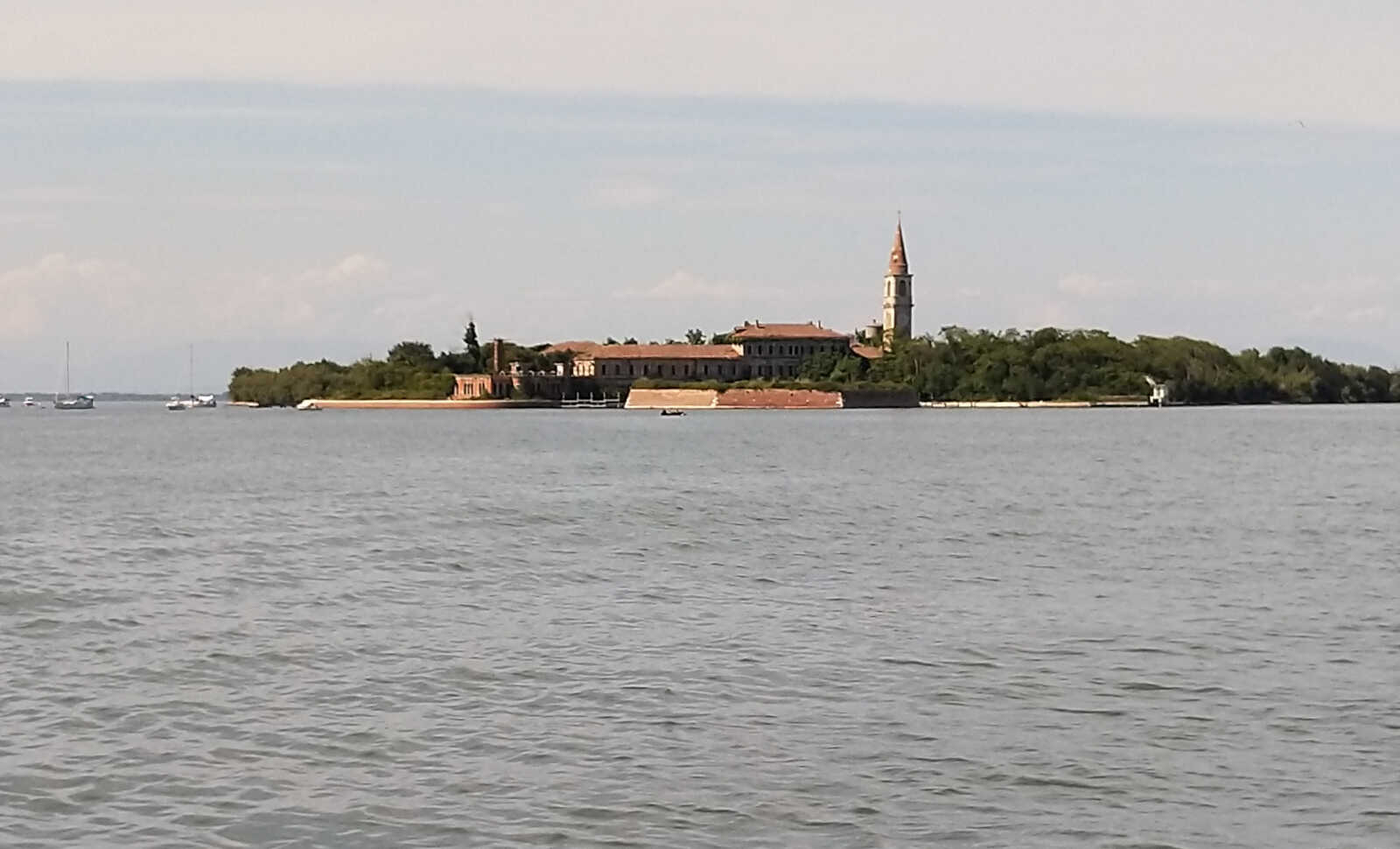
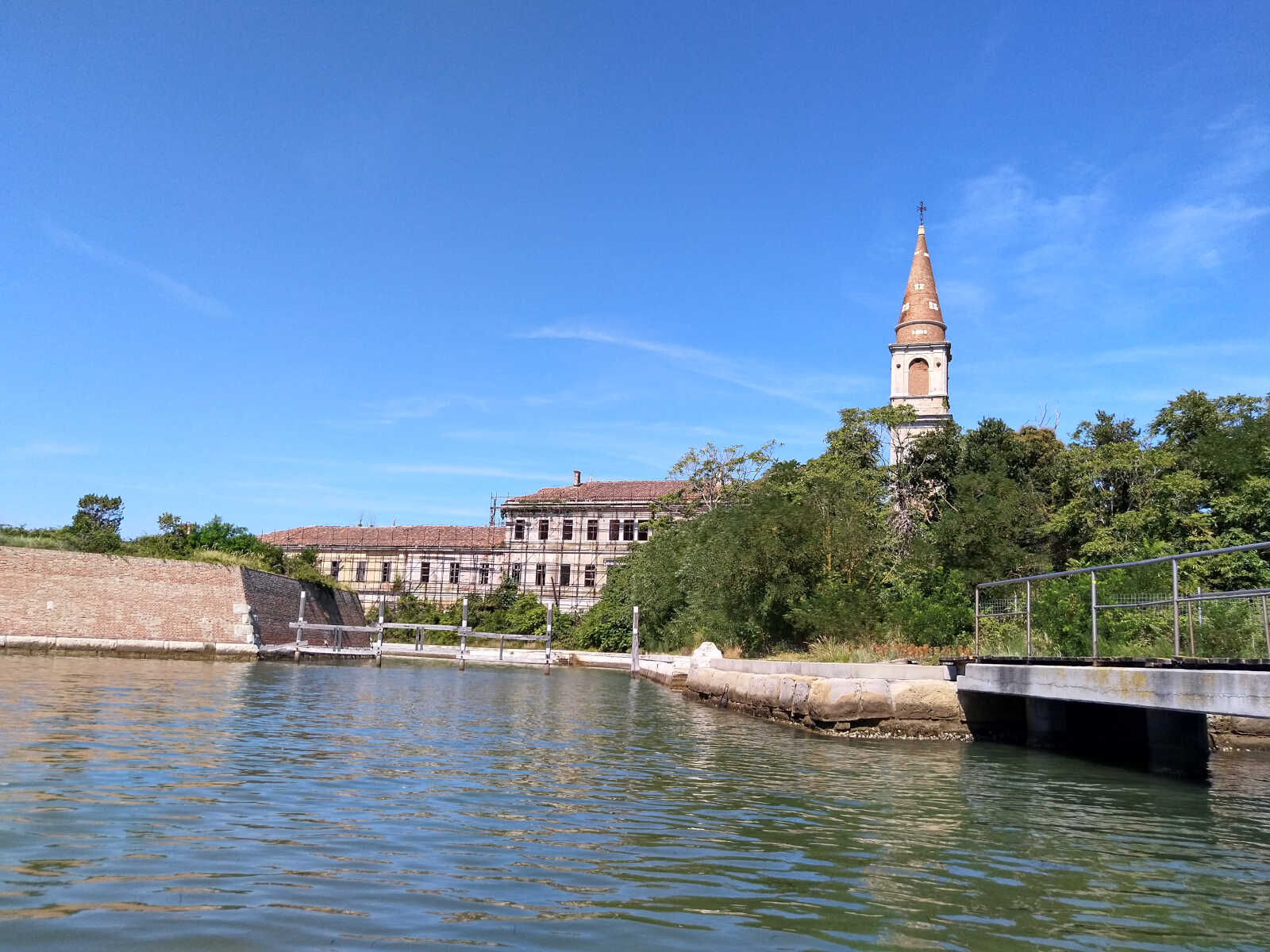

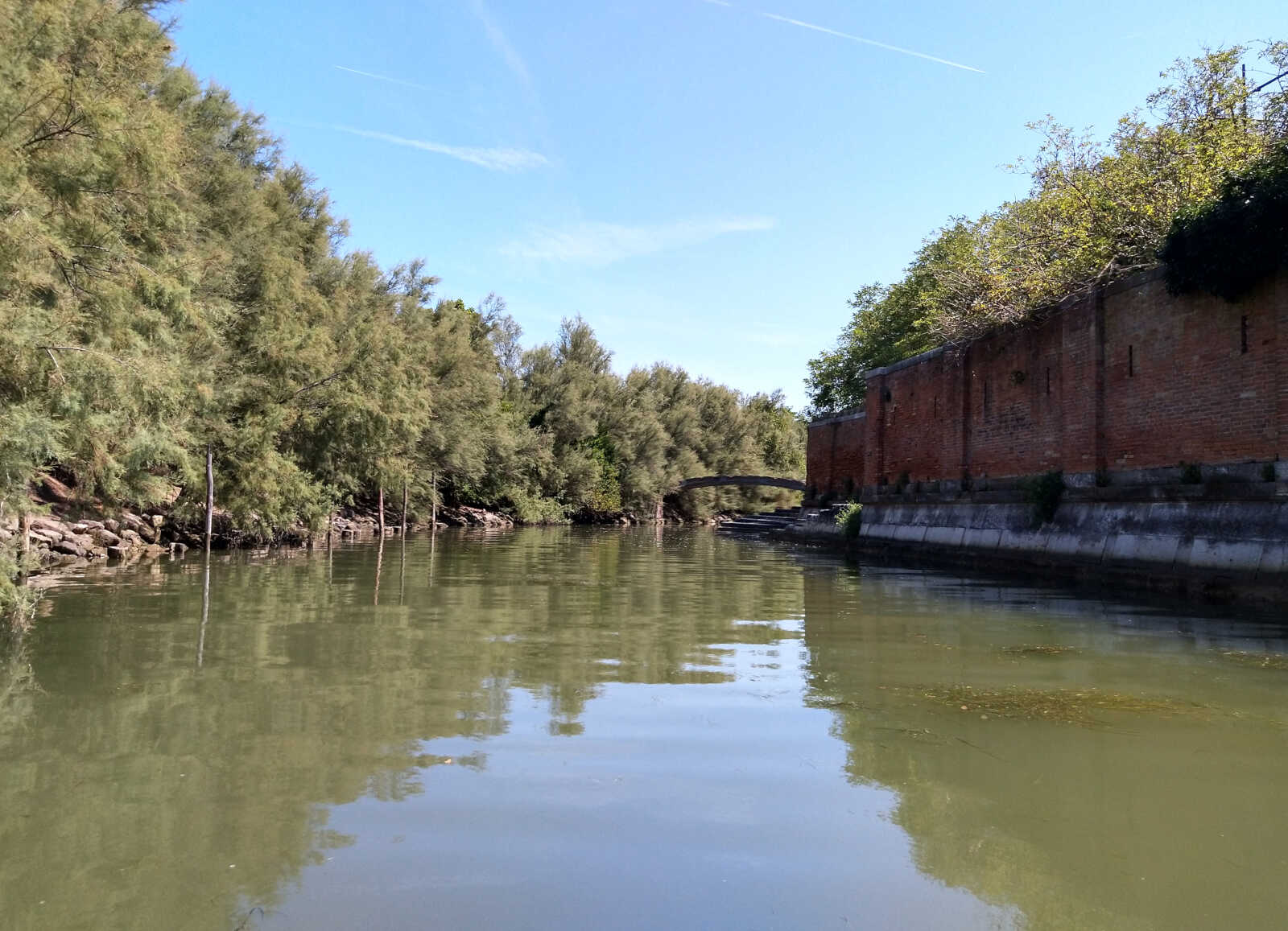
Poveglia è composta in realtà da due isole collegate da un ponte.
L'ancoraggio di Poveglia è uno dei più famosi dell'intera laguna, dato che offre una buona protezione, è spazioso e ha fondali tra i 3 e i 7 m: sappiamo già che spenderemo qui diversi giorni. Siamo nelle giornate clou di Agosto quindi durante il giorno si riempie di barche e barchini di gente del posto, ma dal tramonto in poi ci troviamo sempre quasi soli.
Verso nord si vedono l'isola di Sacca Sessola e di San Clemente, che si frappongono alla Giudecca. Ma si vede anche Marghera, il cancro della laguna. Anche senza considerare l'inquinamento del polo petrolchimico, la sola creazione del canale dei Petroli che da accesso alle grandi navi a Marghera, è tra le pricipali cause del fenomeno di subsidenza (sprofondamento) che interessa Venezia. Ciò è dovuto all'eccessiva fuoriscita di sedimenti dalla laguna; basti pensare che qui, nel cuore della Laguna, si è venuto a creare quello che è il punto più profondo dell'intero alto Adriatico: una fossa di 50 m di profondità!

Le ciminiere di Marghera dietro l'isola di Sacca Sessola
Nonostante il divieto formale di visitare l'isola si scorge sempre qualcuno che si arrampica tra le rovine, quindi spinti dalla curiosità, facciamo anche noi un giretto di perlustrazione.
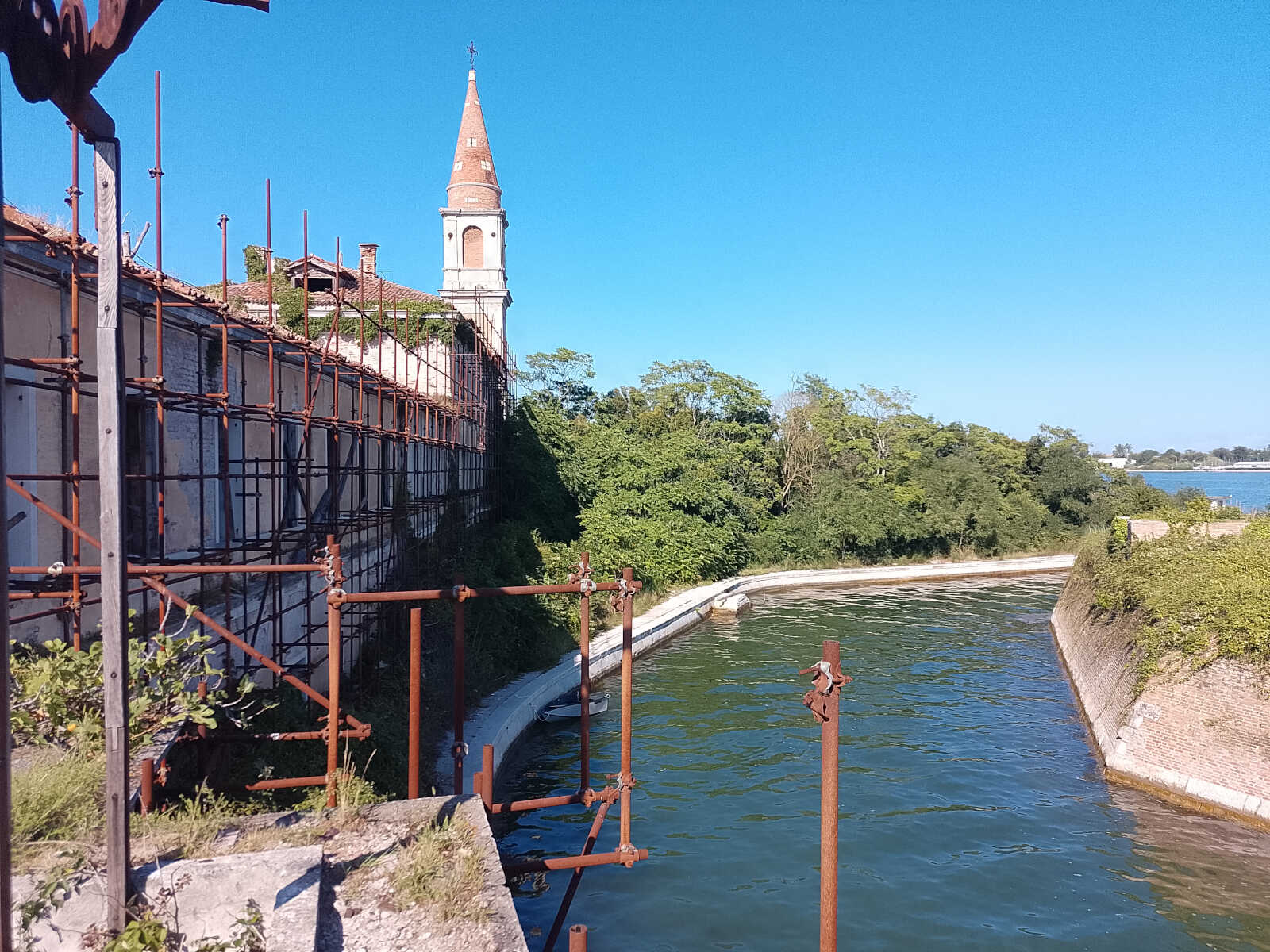
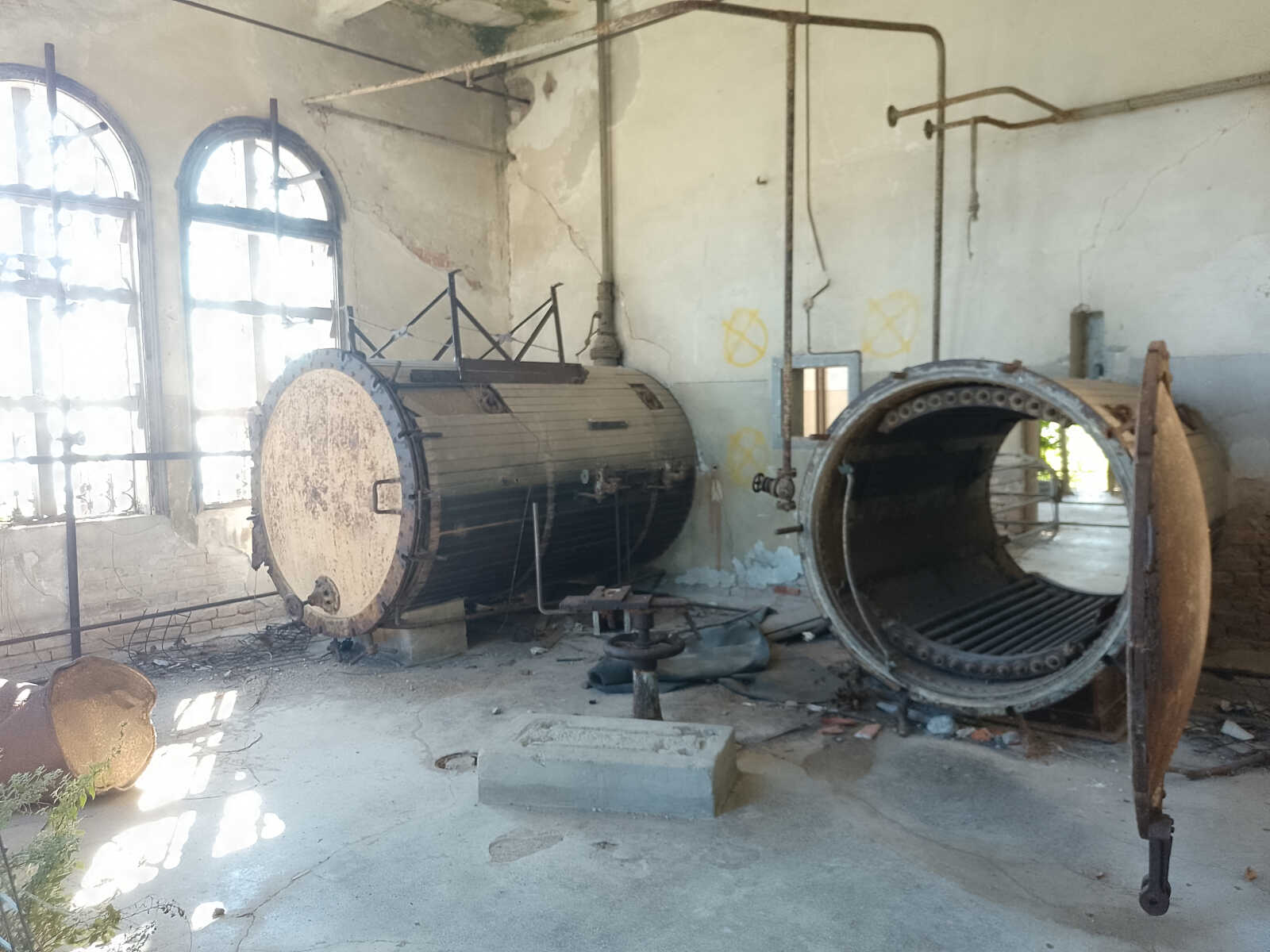
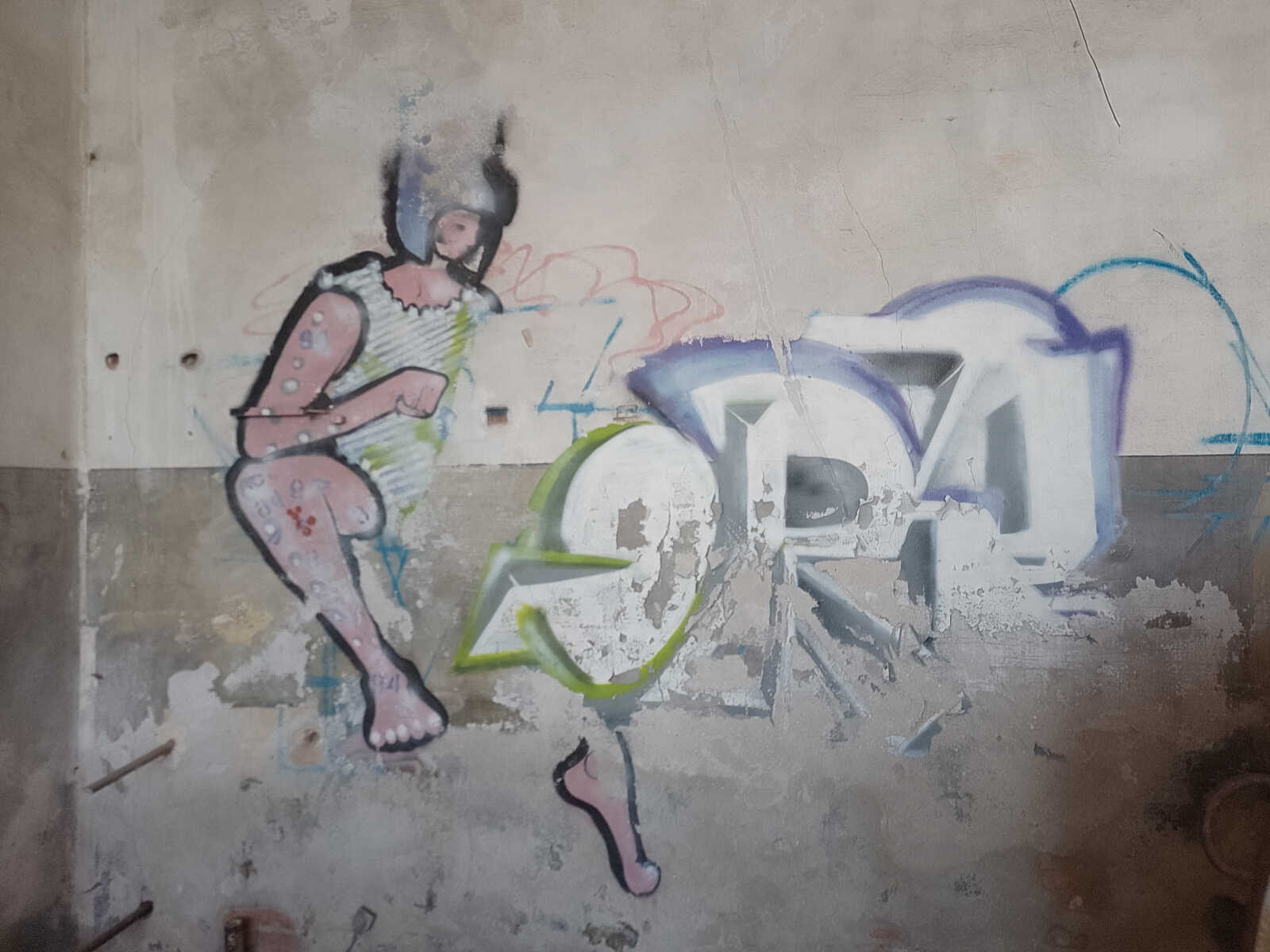
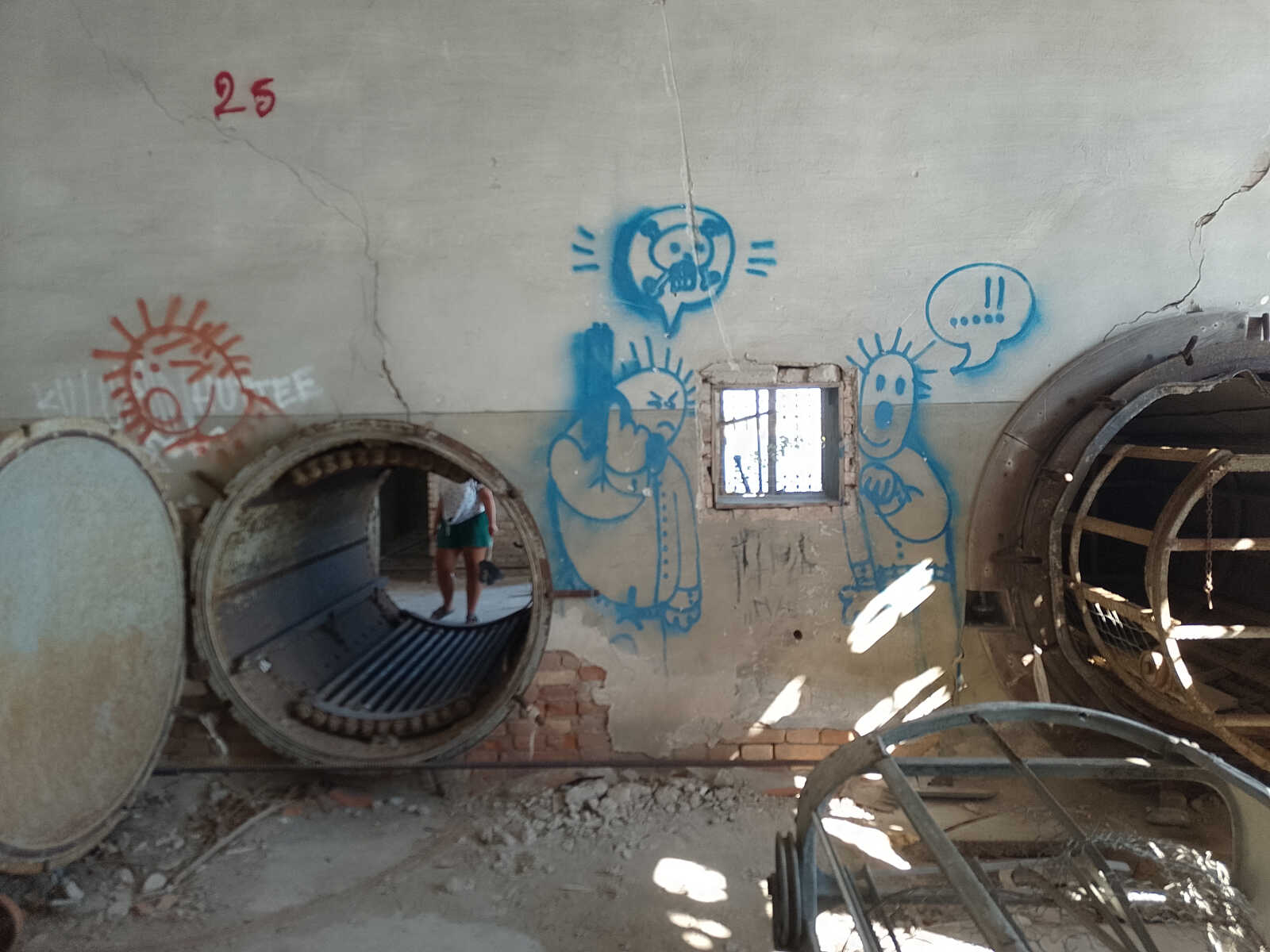
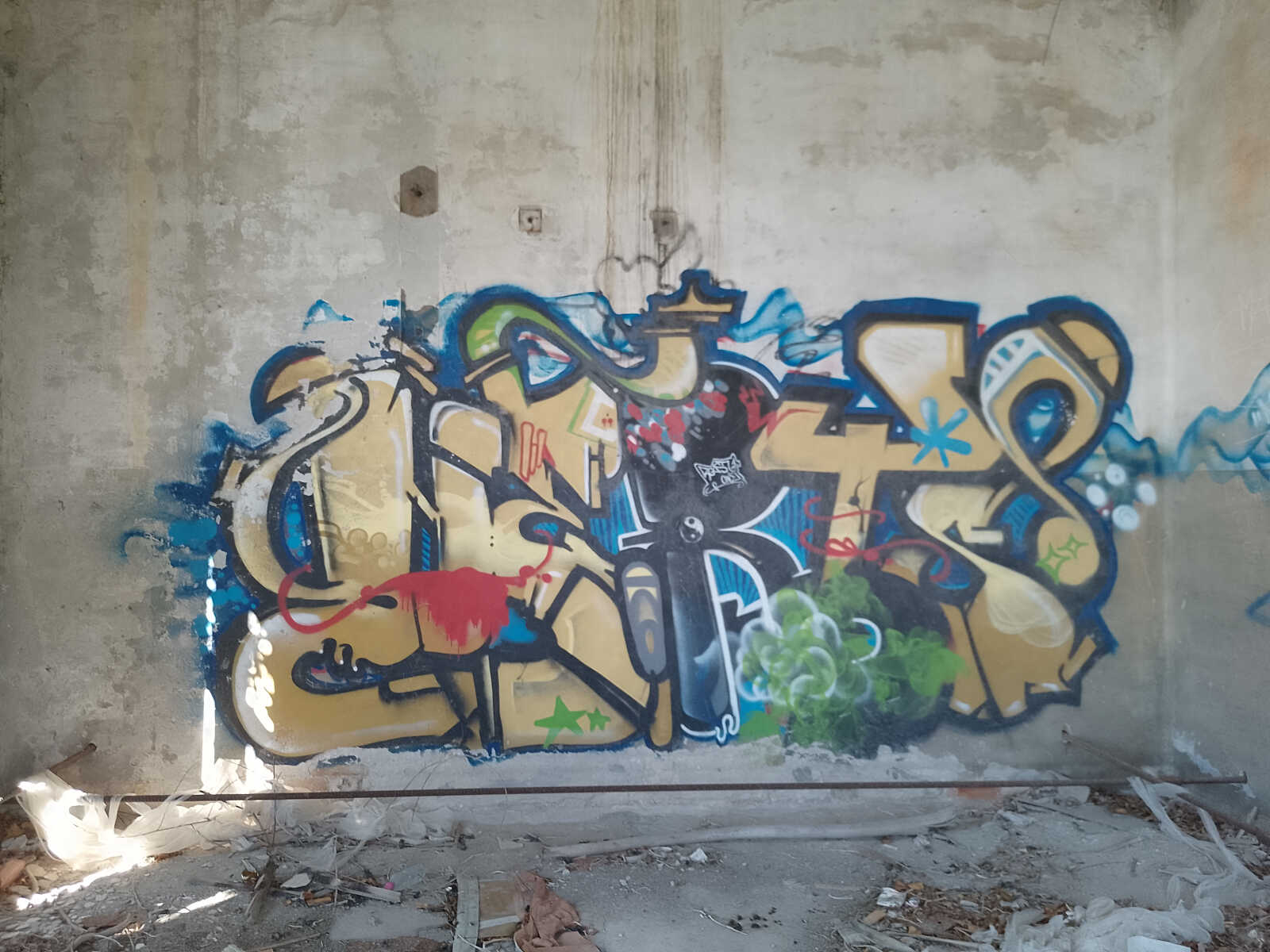
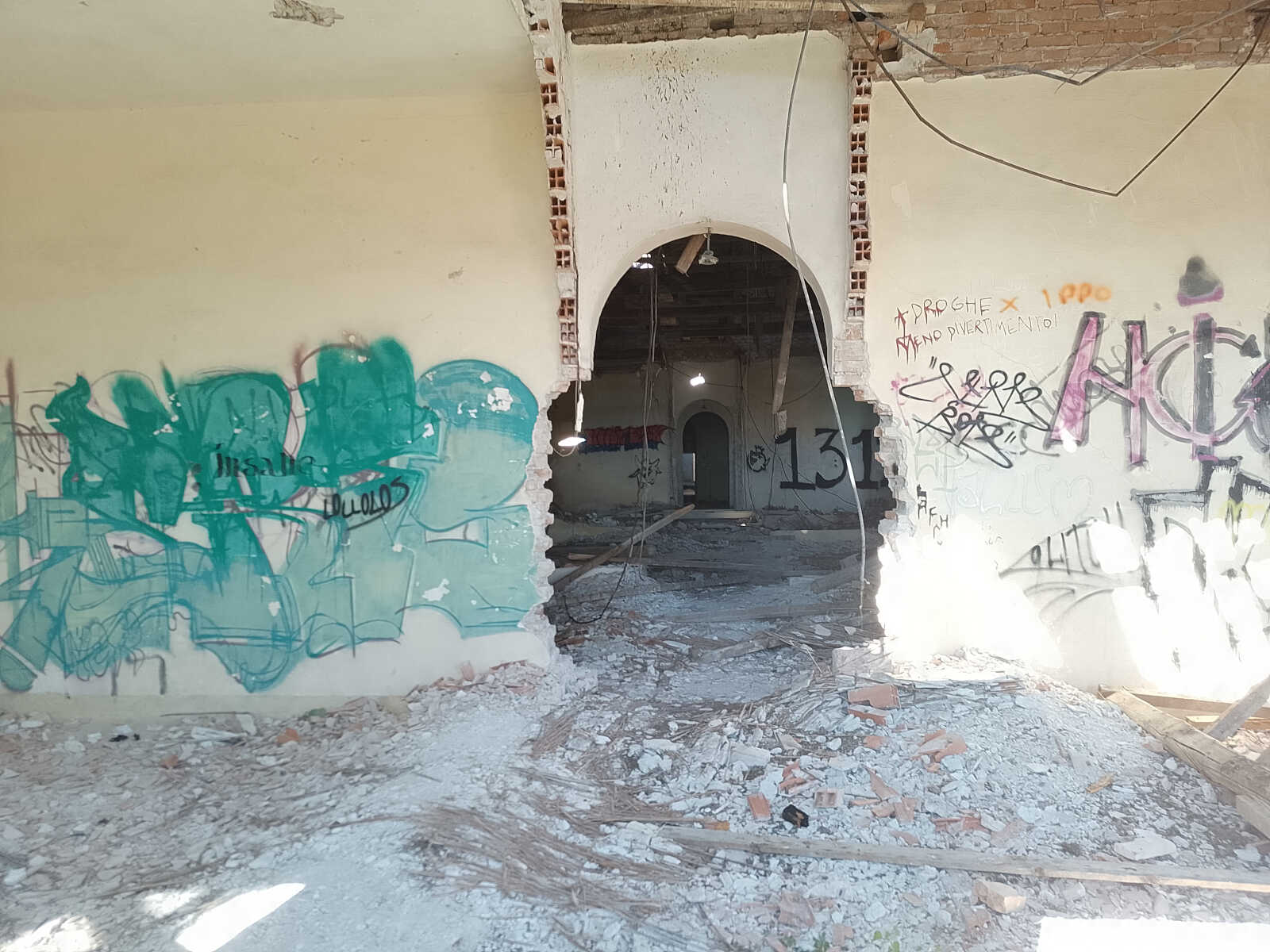
Di fronte a Poveglia, aldilà del canale, si trova l'incantevole Malamocco. Lasciamo la nave madre e la raggiungiamo a bordo del nostro tender. Si tratta quasi di un'isola nell'isola del Lido in quanto il piccolo borgo è completamente circondato da canali. Anche qui i bellissimi edifici colorati catturano la vista e creano quell'indescrivibile atmosfera lagunare. Si respira una quasi sonnecchiosa tranquillità in questa calda domenica agostana, a parte i 3/4 bacari/osterie in cui si sono riversate le persone uscite dalla messa.
L'antica Metamauco era già insediata in epoca romana: era infatti il porto di Padova, trovandosi su quella che era la foce del fiume Brenta. Probabilmente uno degli insediamenti più antichi dell'ntera laguna.
Qui a Malamocco, negli anni '70, visse a lungo il padre di Corto Maltese: il fumettista Hugo Pratt. Tant'è vero che alcuni scorci di Malamocco si possono intravedere nelle tavole dei fumetti del marinaio avventuriero.
Dopo aver visitato tutto il centro abitato e aver comprato del pane fresco per rinpinguare la nostra cambusa, ci concediamo dei cicchetti e un calice di Malvasia.

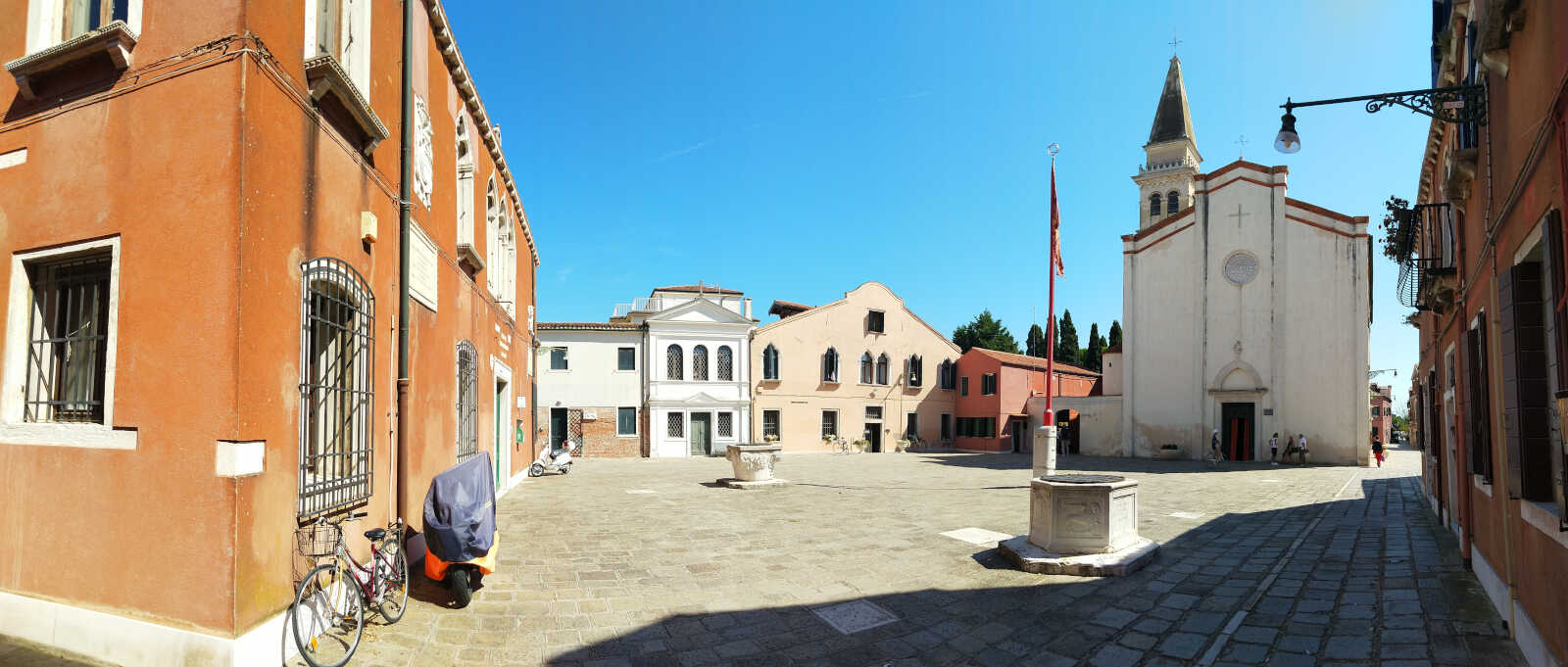
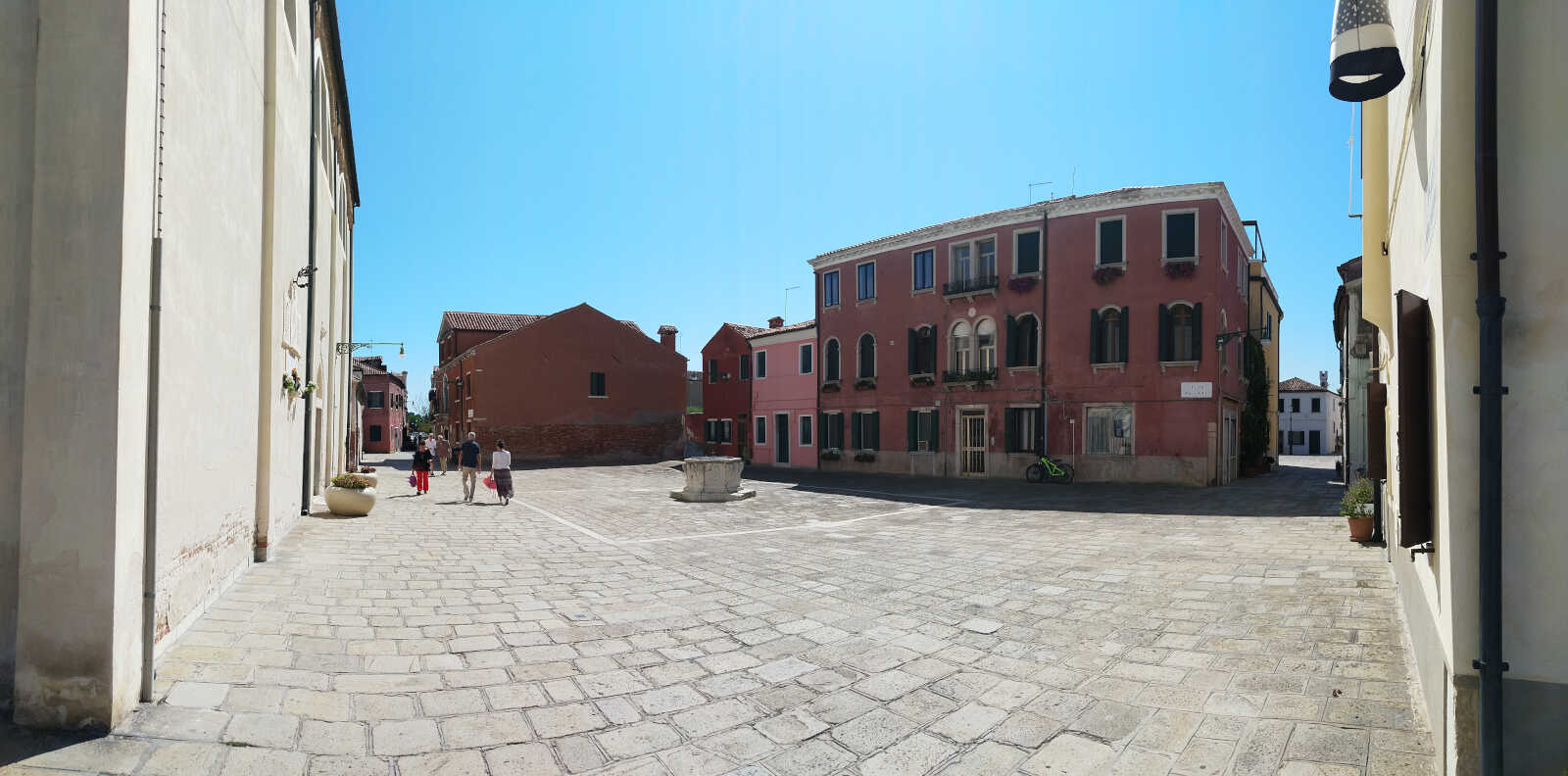

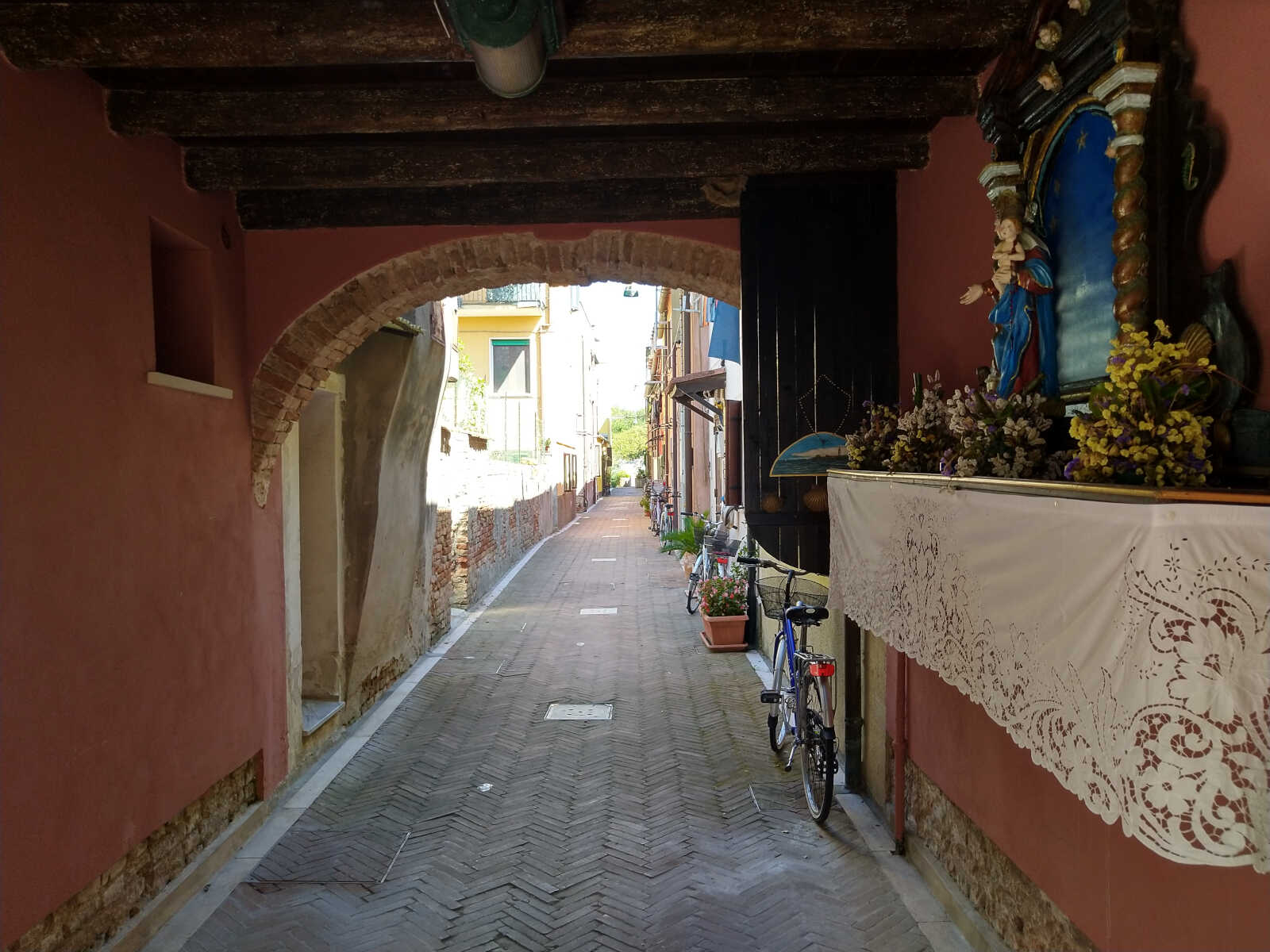

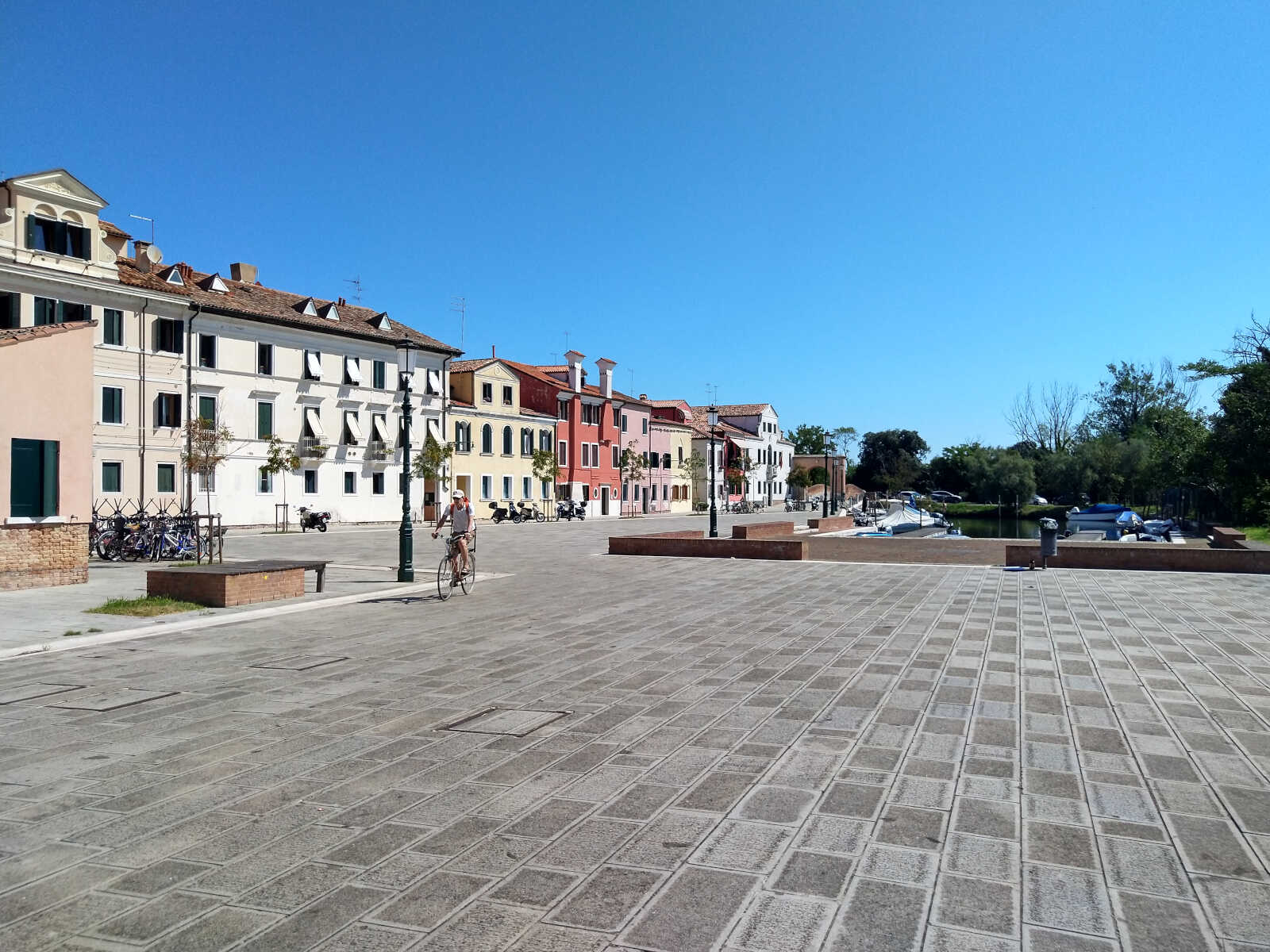
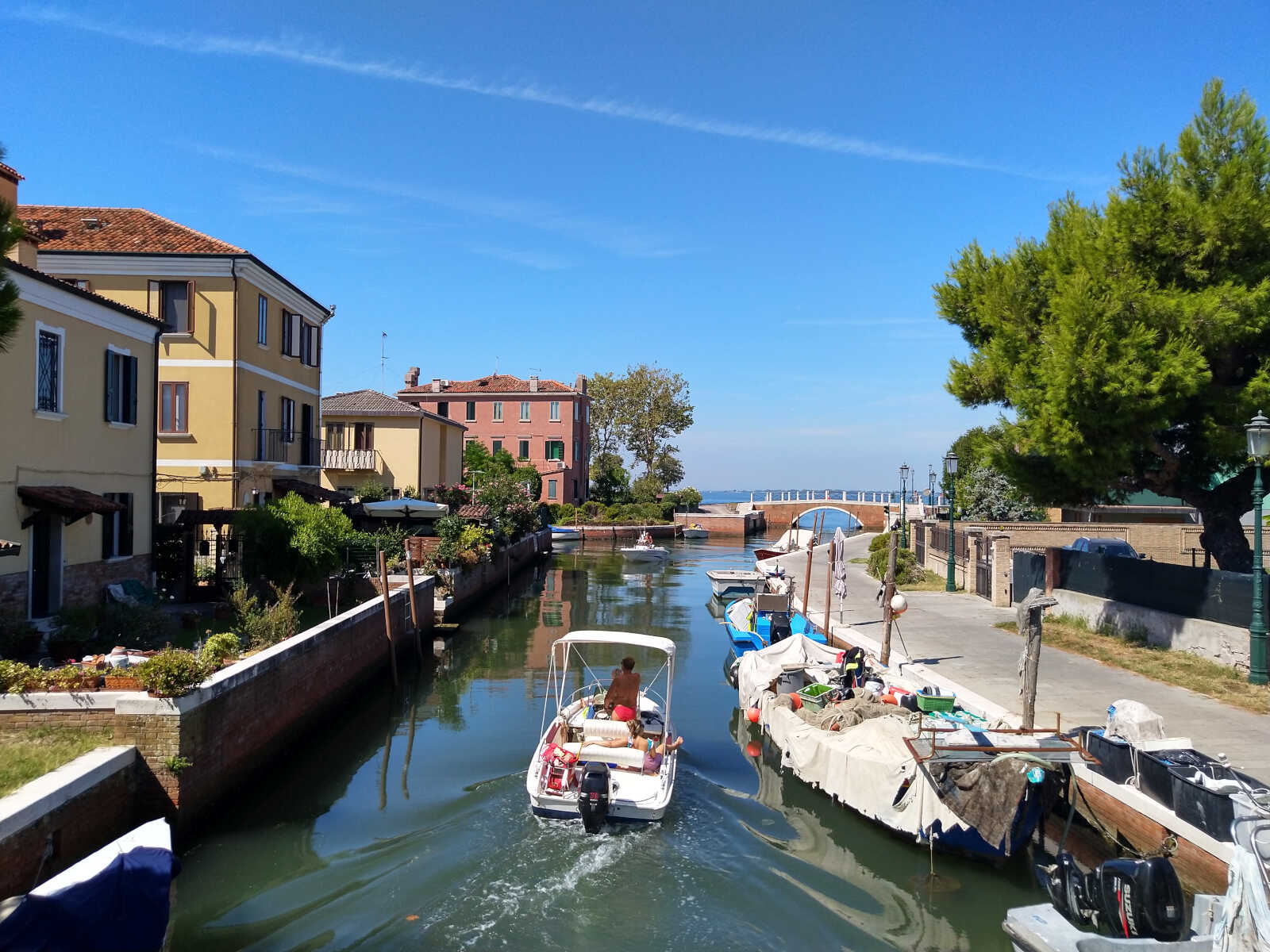
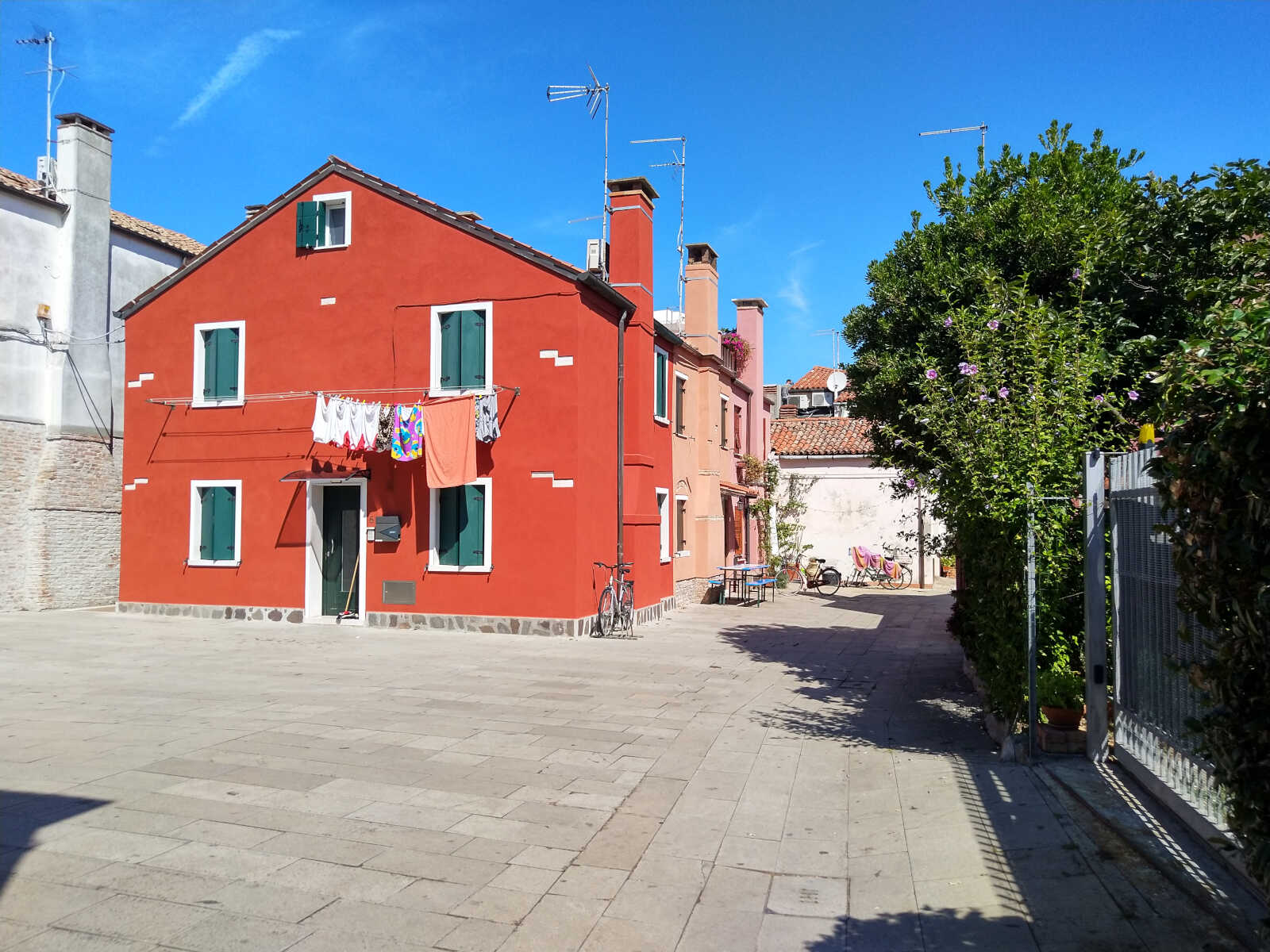
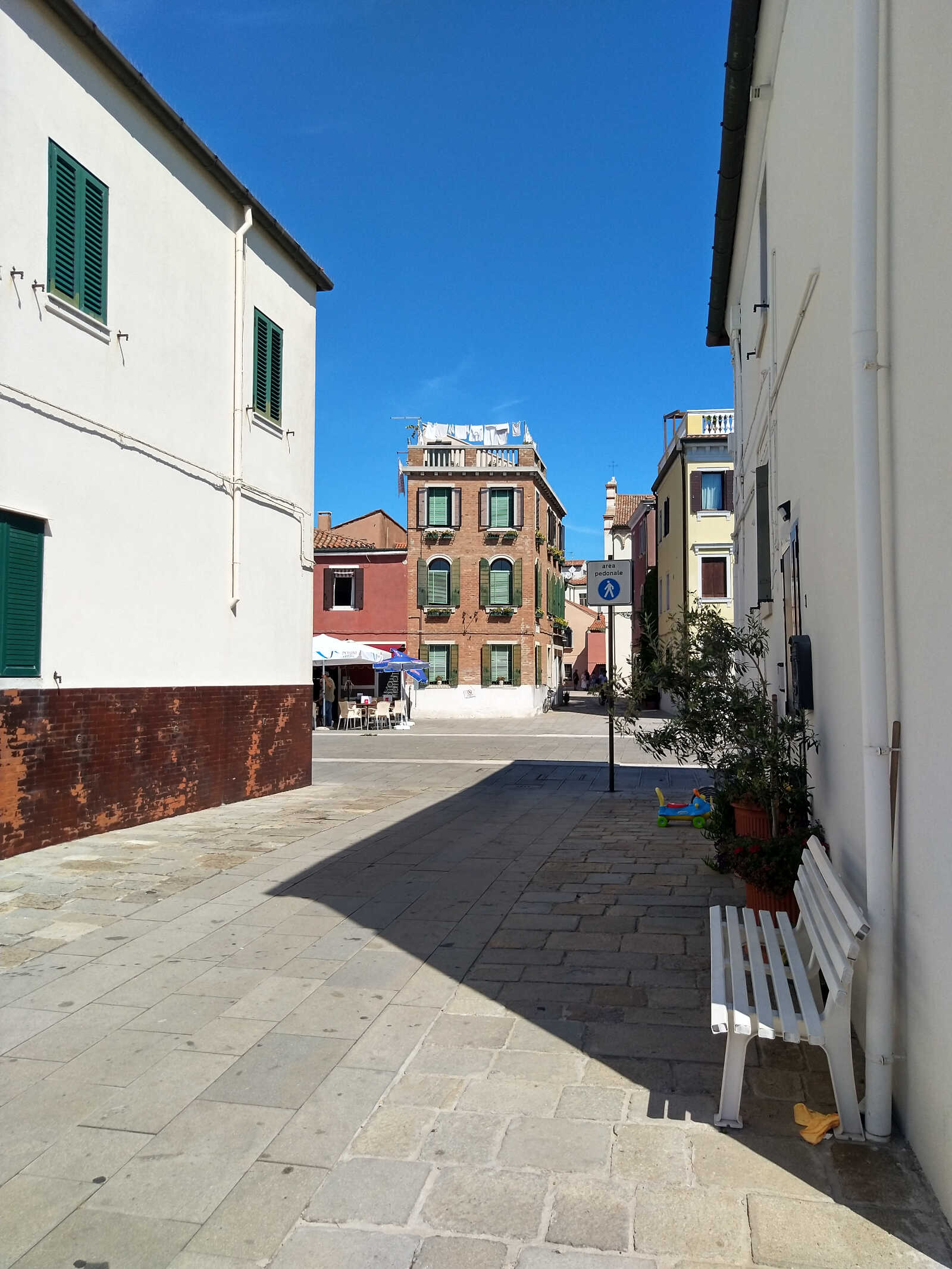
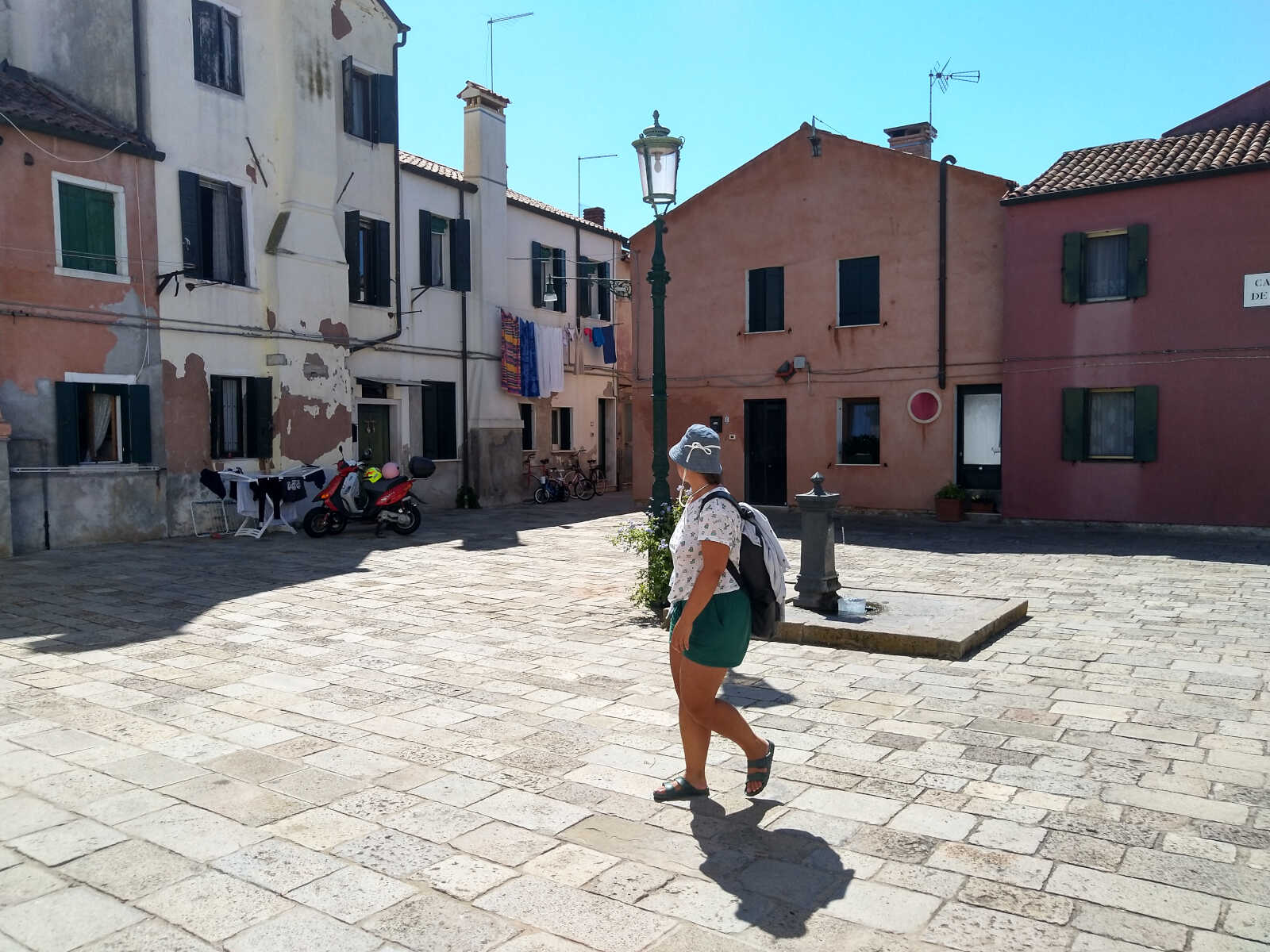
In totale rimaniamo a Poveglia per 5 giorni. Lasciato sfilare il weekend e la sua confusione di barchini con annesse hit estive sparate dagli impianti stereo a tutto volume, ci dirigiamo verso la prossima meta: Burano, Mazzorbo e Torcello.
The Venice lagoon - Part 2
5 Sept, 2024
After Chioggia we begin to enter the Lagoon with its canals and many islands, each with its own history. The traffic of motor boats, small or large, and vaporettos is reminiscent of small town traffic with mopeds, cars, and buses! Another feature of lagoon navigation is the importance of always keeping an eye on the depth. Liith, with its 1.95 m draft, in fact, is not exactly the ideal boat for lagoon waters, and the alarm on the onboard instruments that sounds every time 3 m depth is reached certainly never made us forget it!
We sail back north along the Pellestrina Channel, which skirts the 11-km-long island of the same name and ranges in width from a maximum of 1.2 km to only 23 m! This makes it the narrowest shoreline among those that divide the lagoon from the Adriatic Sea. On our right parade, in a fascinating procession, churches, colorful little houses and harbors that form the various settlements of this that was among the first settlements of the Venetian peoples fleeing the barbarian invasions. Definitely one of the most beautiful canals we have traveled!







Half an hour after setting off we begin to hear the engine rumbling, having passed large patches of seaweed, we think maybe some got stuck in the propeller, but the engine seems to be losing more and more steam, so the hypothesis arises that perhaps we have run out of gas and that the fuel gauge, which is still showing a quarter full, is not working properly. We don't know the cause yet, but a solution must be found since we are in danger of finding ourselves adrift in the busy channel. We begin to ask passing boats for a tow and fortunately after a few attempts we find our rescuers, hand them the mooring lines from the bow to be towed and once in front of the gas station ( which fortunately was not very far away), we manage to make a perfect mooring maneuver using only the headway (i.e., what was left of the movement imprinted by the tow). We can already breathe a sigh of relief: at least we are not adrift at the mercy of the current.
Having filled up the tank, after a couple of attempts, the engine starts without any strange noises and we continue along the Pellestrina Channel and as time goes by our conviction strengthens that we had simply run out of fuel and Lilith's engine has no malfunction: slowly we return to savor the wonderful view of the villages of San Vito, San Antonio, Porto Secco and finally San Pietro in Volta before crossing the mouth of Malamocco that separates Pellestrina from Lido.
We then coast the island of Lido to our first anchorage of the cruise, southwest of the island of Poveglia.
Once again we are dealing with a strip of land rich in history, even if to see it today one would not think so: the island of Poveglia is in fact covered by thick vegetation and the only building present are the ruins of what was originally a quarantine center for ships in transit (from the late 1700s until 1922) and was an asylum until 1968. After that came abandonment and a ban on access to the entire island.
But before all that, Poveglia was one of the most important and richest lagoon settlements in the late Romanesque period so much so that it could later boast direct representation in the Venetian Republic and privileges such as exemptions from taxes and military service.
During the war with Genoa in 1379, however, Poveglia was destroyed. Its population had to take refuge in Giudecca, where, however, the people of Poveglia maintained their identity thanks to their influence in the fish trade and fishing, united in the guild of “Compravendi pesci.”




Poveglia actually consists of two islands connected by a bridge.
Poveglia anchorage is one of the most famous in the entire lagoon, as it offers good protection, is spacious and has depths between 3 and 7 m: we already know that we will spend several days here. We are in the peak days of August so during the day it fills up with boats of locals, but from sunset onward we find ourselves almost always alone.
To the north you can see from Poveglia the islands of Sacca Sessola and San Clemente, which stand in the way of Giudecca. But you can also see Marghera, the cancer of the lagoon. Even without considering the pollution from this big petrochemical hub, the creation of the Canal " Canale dei Petroli" alone, which gives access to large ships to Marghera, is among the pricipal causes of the subsidence, the sinking phenomenon affecting Venice. This is due to the excessive outflow of sediment from the lagoon; suffice it to say that here, in the heart of the Lagoon, what is the deepest point in the entire upper Adriatic has formed: a 50 m deep trench!

The skyline of Marghera behind the island of Sacca Sessola
Despite the formal prohibition to visit the island, we kept seeing people climbing among the ruins, so driven by curiosity, we also took a little scouting trip.






Across the channel from Poveglia is the enchanting Malamocco. We leave the mother ship and reach it aboard our tender. It is almost an island within the island of Lido as the small village is completely surrounded by canals. Here, too, the beautiful colorful buildings catch the eye and create that indescribable lagoon atmosphere. One breathes an almost sleepy tranquility on this hot August Sunday, apart from the 3-4 bacari (typical wine bar) and hosterias (restaurant of local cuisine) into which people flocked after Mass.
Ancient Metamauco was already settled in Roman times: it was in fact the port of Padua, being located on what was the mouth of the Brenta River. Probably one of the oldest settlements in the entire lagoon.
Here in Malamocco, in the 1970s, the father of Corto Maltese lived for a long time: the cartoonist Hugo Pratt. So much so that some views of Malamocco can be glimpsed in the comic book plates of the adventurous sailor.
After touring the entire town and buying fresh bread to replenish our galley, we treat ourselves to some cicchetti (local finger food) and a glass of Malvasia.











In total we stay in Poveglia for five days. We waited the end of the weekend and its hustle and bustle of the barchini (small speed boats) and their blaring stereos blasting summer hits, to head to our next destination: Burano, Mazzorbo and Torcello.